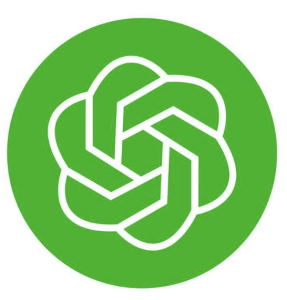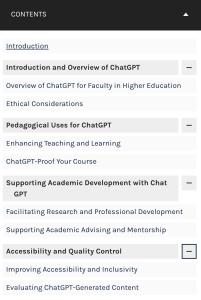Introduction
Higher education appears to be enveloped in an existential crisis at the moment, brought on by the recent advent of Artificial Intelligence and tools such as ChatGPT and Google Bard.

Much of the conversation by faculty and administration in higher ed has been concerned with answering questions like, “How do we adopt an Academic Integrity Policy that will help to combat the inevitable cheating that will occur with these tools?” and “What tools exist or are being developed to help us catch students in the act of cheating?”
While these are certainly relevant questions, they are not the only ones we should be asking. We might also inquire about how we can use this tool to be better at our jobs as educators. We should investigate the application of AI in fields where we teach. Our students will likely be using this tool when they enter the career field and it is our job as educators to teach them how they might do that.
This book emerged from my own personal experimentation with ChatGPT as I sought to examine what functions I could get it to perform related to world of education. I asked it questions about what it was capable of doing and then I tried out various prompts within the context of actual courses with real learning objectives.
Perhaps the most valuable element of this resource is the examples of ChatGPT prompts that are specifically written for faculty members in a higher education setting. You can view the prompts I provided ChatGPT and the results it returned. The goal was to investigate the range of functions that could be performed to support faculty members in the execution of their duties.
Anytime you see a call out accompanied by an accordion within this book, you can open it up to view an example of a ChatGPT prompt and its responses. For example:
You might consider cutting and pasting some of the prompts from this book into ChatGPT. You can replace some of the language with the names of your own courses and associated course objectives.
Note that there are also several prompts in the book where there is an extensive back-and-forth conversation with ChatGPT. I included all of the dialogue when instances like this occur, but you may need to continue scrolling to see it all:
 The organization of this book consists of the following sections and chapters. You can use the contents menu in the upper left corner of this books to navigate to the chapters that most interest you or to find relevant ChatGPT prompts:
The organization of this book consists of the following sections and chapters. You can use the contents menu in the upper left corner of this books to navigate to the chapters that most interest you or to find relevant ChatGPT prompts:
- Introduction and Overview of ChatGPT
- Overview of ChatGPT for Faculty in Higher Education
- Ethical Considerations
- Pedagogical Uses for ChatGPT
- Enhancing Teaching and Learning
- ChatGPT-Proof Your Course
- Supporting Academic Development with Chat GPT
- Facilitating Research and Professional Development
- Supporting Academic Advising and Mentorship
- Accessibility and Quality Control
- Improving Accessibility and Inclusivity
- Evaluating ChatGPT-Generated Content

